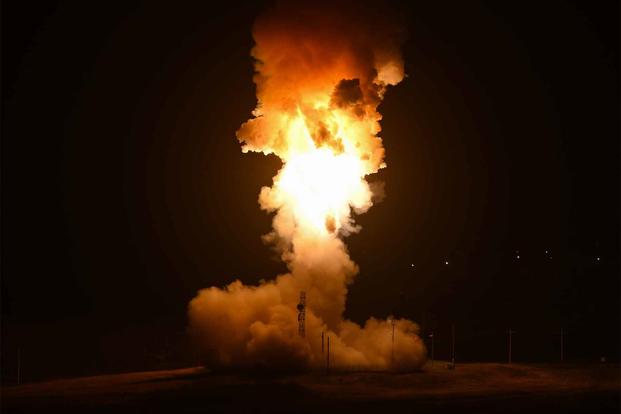The Space Force and Air Force "safely terminated" an unarmed Minuteman III intercontinental ballistic missile over the Pacific Ocean on Wednesday, after a test launch experienced an unknown issue, the military said.
A test launch from Vandenberg Space Force Base in California went awry "due to an anomaly" early Wednesday morning, according to a press release from the service. The cause of what went wrong with the nuclear-capable missile is still being investigated.
"An anomaly is any unexpected event during the test," Air Force Global Strike Command said in a press release. "A Launch Analysis Group is forming to investigate the cause."
Read Next: New Moms in the Navy No Longer Have to Take Fitness Tests in the First Year After Giving Birth
The Minuteman III, made by Boeing, is an intercontinental ballistic missile fired from land that forms one leg of the U.S. nuclear triad -- the combination of land, sea and air weapons that can deliver a nuclear payload. It has a range of more than 6,000 miles and can travel at speeds of up to 15,000 miles per hour.
There are 400 of them spread out among missile fields at F.E. Warren Air Force Base, Wyoming; Malmstrom Air Force Base, Montana; and Minot Air Force Base, North Dakota.
The intercontinental ballistic missiles were first put into service in the 1970s, with an original planned lifespan of 10 years. The Minuteman III has been in the service now for more than 50 years. The Air Force is planning to phase it out for the LGM-35A Sentinel, made by Northrop Grumman, and aims to reach the essential operating number of the new missiles sometime in 2030.
"The command learns lessons from every test launch," Air Force Global Strike Command said in the release. "Gathering data from the launch allows AFGSC to identify and correct any issues with the weapon system to ensure the Minuteman III's continued reliability and accuracy."
The last test, prior to Wednesday's error, was in early September, when an unarmed Minuteman III equipped with three test reentry vehicles was launched from Vandenberg. The reentry vehicle -- the part of the weapon that would carry the explosive -- traveled 4,200 miles to the remote Kwajalein Atoll in the Marshall Islands.
Air Force Global Strike Command is currently undergoing massive cleanup efforts for polychlorinated biphenyls -- chemical compounds that likely cause cancer -- at all three of America's nuclear bases amid an Air Force study into elevated cancer cases among missileers.
-- Thomas Novelly can be reached at thomas.novelly@military.com. Follow him on Twitter @TomNovelly.
Related: Elevated Levels of Carcinogens Found at 2nd Air Force Nuclear Missile Base












